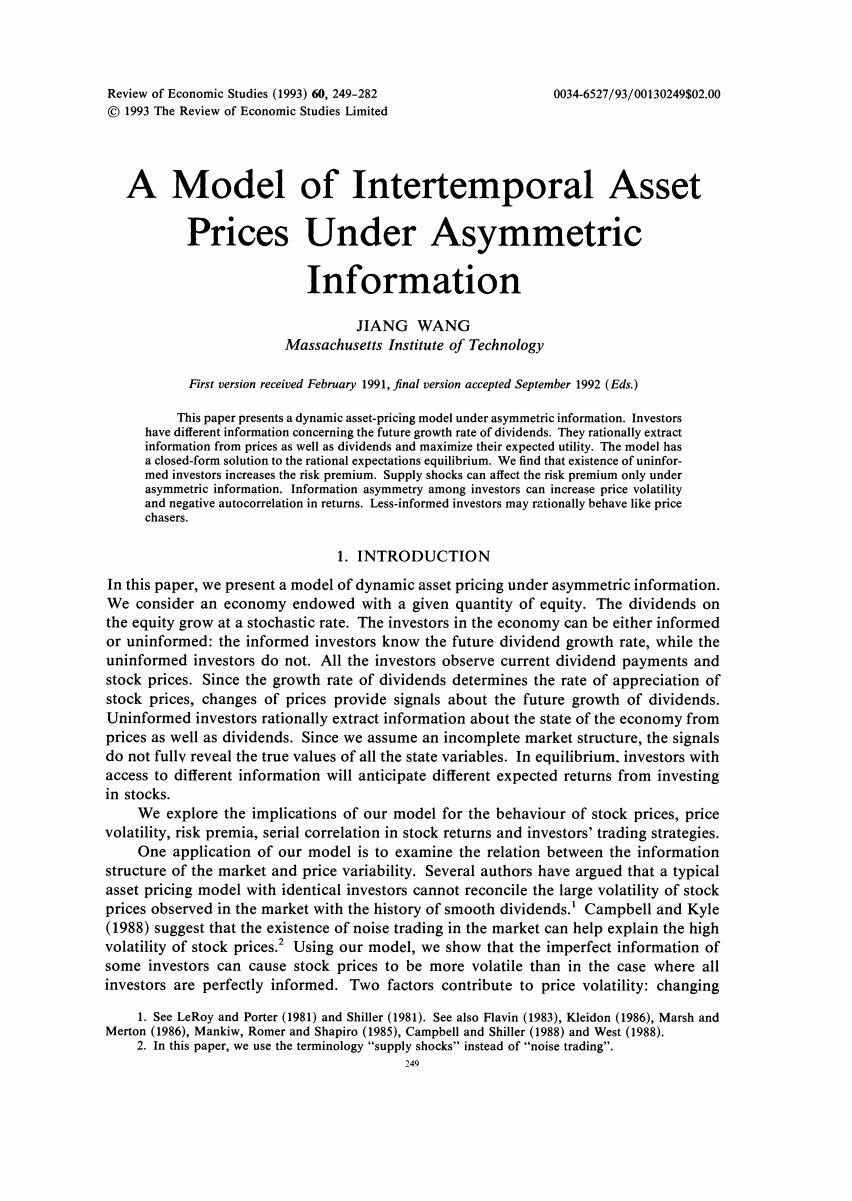正在加载图片...

Review of Economic Studies(1993)60,249-282 0034-6527/93/00130249302.00 C 1993 The Review of Economic Studies Limited A Model of Intertemporal Asset Prices Under Asymmetric Information JIANG WANG Massachusetts Institute of Technology First version received February 1991,final version accepted September 1992 Eds.) This paper presents a dynamic asset-pricing model under asymmetric information.Investors have different information concerning the future growth rate of dividends.They rationally extract information from prices as well as dividends and maximize their expected utility.The model has a closed-form solution to the rational expectations equilibrium.We find that existence of uninfor- med investors increases the risk premium.Supply shocks can affect the risk premium only under asymmetric information.Information asymmetry among investors can increase price volatility and negative autocorrelation in returns.Less-informed investors may rationally behave like price chasers. 1.INTRODUCTION In this paper,we present a model of dynamic asset pricing under asymmetric information. We consider an economy endowed with a given quantity of equity.The dividends on the equity grow at a stochastic rate.The investors in the economy can be either informed or uninformed:the informed investors know the future dividend growth rate,while the uninformed investors do not.All the investors observe current dividend payments and stock prices.Since the growth rate of dividends determines the rate of appreciation of stock prices,changes of prices provide signals about the future growth of dividends Uninformed investors rationally extract information about the state of the economy from prices as well as dividends.Since we assume an incomplete market structure,the signals do not fully reveal the true values of all the state variables.In equilibrium.investors with access to different information will anticipate different expected returns from investing in stocks. We explore the implications of our model for the behaviour of stock prices,price volatility,risk premia,serial correlation in stock returns and investors'trading strategies. One application of our model is to examine the relation between the information structure of the market and price variability.Several authors have argued that a typical asset pricing model with identical investors cannot reconcile the large volatility of stock prices observed in the market with the history of smooth dividends.'Campbell and Kyle (1988)suggest that the existence of noise trading in the market can help explain the high volatility of stock prices.?Using our model,we show that the imperfect information of some investors can cause stock prices to be more volatile than in the case where all investors are perfectly informed.Two factors contribute to price volatility:changing 1.See LeRoy and Porter (1981)and Shiller (1981).See also Flavin (1983),Kleidon (1986),Marsh and Merton (1986),Mankiw,Romer and Shapiro (1985),Campbell and Shiller (1988)and West (1988). 2.In this paper,we use the terminology "supply shocks"instead of"noise trading". 249